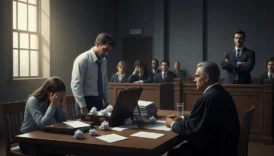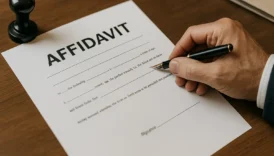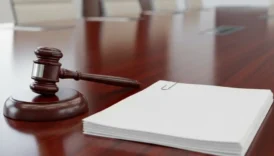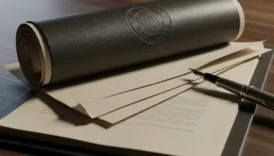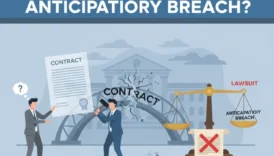What Is Legal Voir Dire?
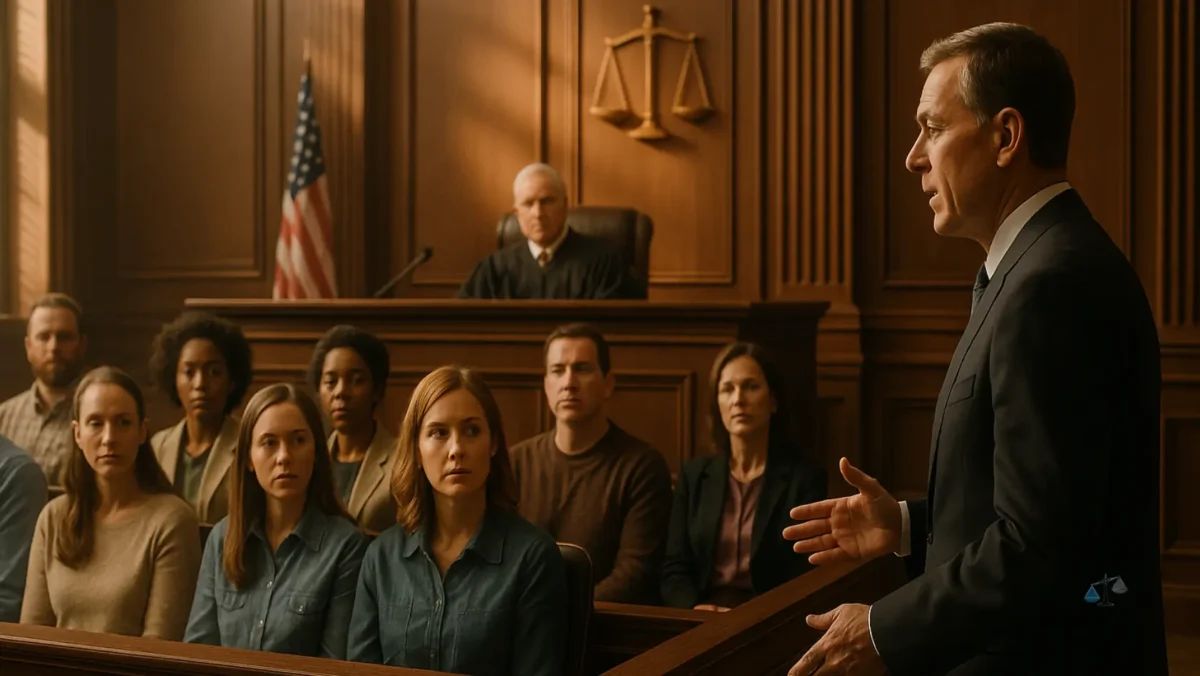
- What Is Legal Voir Dire?
- Core Definition and Overview
- Underlying Legal Principles
- How It Works in Practice
- The Step-by-Step Flow
- Types of Juror Challenges
- Why This Legal Concept Matters
- Common Legal Questions
- What is the ultimate goal of the voir dire process?
- Can lawyers ask potential jurors absolutely anything during voir dire?
- What is the main difference between a challenge for cause and a peremptory challenge?
- Does the jury selection process happen in every single court case?
- What happens if a biased juror is discovered after the trial has already started?
- Author & Editorial Note
Core Definition and Overview
Voir dire in simple legal terms, is the crucial court proceeding where attorneys for both sides—and sometimes the judge—question a pool of potential jurors to select a final, impartial jury for a trial. The name, derived from an Anglo-Norman phrase, roughly translates to “to speak the truth.”
In practice, this means voir dire is much more than a simple Q&A session. It’s a strategic process designed to uncover hidden biases, personal experiences, or prejudices that could prevent a juror from being fair and open-minded. The key takeaway is that this legal concept acts as a critical quality control check on the justice system, ensuring that the people deciding the case will base their verdict only on the facts and evidence presented in the courtroom, not on preconceived notions.
The group of potential jurors questioned is known as the venire. As of 2025, while the principle of voir dire is a universal standard in the U.S. legal system, the specific methods and the extent of attorney involvement can vary significantly from state to state and even from judge to judge.
Underlying Legal Principles
The voir dire process isn’t just a tradition; it’s a procedural safeguard firmly rooted in the constitutional right to a fair trial. The key legal authority for this principle comes directly from the U.S. Constitution, which demands that a jury be unbiased and impartial.
Specifically, two core amendments provide the foundation:
- The Sixth Amendment: In criminal cases, this amendment explicitly guarantees an accused person the right to a trial “by an impartial jury.” This is the primary driver behind voir dire in criminal law.
- The Seventh Amendment: While it primarily guarantees the right to a jury trial in certain civil cases, its principles have been interpreted to require a similar level of fairness and impartiality from the jury.
In essence, this legal concept is the practical tool that brings these constitutional rights to life. Without a method to vet potential jurors for bias, the guarantee of an “impartial jury” would be an empty promise. That said, the specific “how-to” is governed by federal and state rules of procedure. Over time, a significant body of case law and judicial precedent has further defined the rules, establishing what questions are permissible and what constitutes a legally sound reason to dismiss a potential juror.
How It Works in Practice
While the core goal of voir dire is always the same, the actual process can feel a bit like a strategic interview conducted in a very public setting. It’s a structured exchange designed to efficiently reveal a person’s ability to be a fair juror.
The key takeaway is that attorneys aren’t just looking for overtly biased people; they are also trying to understand a juror’s life experiences, attitudes, and potential sympathies. The process generally unfolds in a predictable sequence.
The Step-by-Step Flow
Consider this typical sequence of events in the courtroom:
- Summoning the Venire: A large group of citizens (the venire) who have been called for jury duty is brought into the courtroom.
- Initial Remarks: The judge introduces the case, including the parties (plaintiff, defendant) and their lawyers, and gives a brief, neutral summary of the facts.
- The Questioning Begins: This is the heart of voir dire. In some federal courts, the judge conducts most of the questioning. However, in most state courts, the attorneys for each side are given significant latitude to ask questions directly to the potential jurors.
- Challenging Jurors: Based on the answers given, attorneys can ask to have a juror removed. This is done through two distinct methods.
Types of Juror Challenges
Attorneys use two tools to shape the final jury panel:
- Challenges for Cause: This is a request to dismiss a juror for a specific, stated reason indicating clear bias. An attorney can make an unlimited number of these challenges, but the judge must agree that the reason is valid. Common reasons include a juror admitting they can’t be impartial, having a personal connection to someone in the case, or demonstrating a strong prejudice.
- Peremptory Challenges: This is a more strategic tool. An attorney can use a peremptory challenge to dismiss a juror without giving any reason at all. However, each side has a limited number of these challenges, which is set by law. The only major restriction, established in the landmark case Batson v. Kentucky, is that these challenges cannot be used to discriminate by removing jurors solely because of their race or gender.
Why This Legal Concept Matters
The voir dire process is far more than a procedural formality; it is a cornerstone of the American justice system’s claim to fairness. Its importance can be seen in several key areas that impact everyone from the defendant to society at large.
The key takeaway is that without this screening process, the right to a fair trial would be significantly undermined.
- Upholding Constitutional Rights: At its core, this doctrine directly protects the constitutional right to an impartial jury. It provides the mechanism to enforce this guarantee, ensuring that the people deciding a case are not bringing hidden biases that would predetermine the outcome.
- Building Public Trust: The legitimacy of the entire justice system rests on public confidence. A transparent, rigorous jury selection process helps assure the community that verdicts are reached based on evidence and law, not on prejudice, which strengthens faith in the legal system as a whole.
- Empowering the Litigants: This legal principle gives both the prosecution and the defense a critical and active role in selecting the tribunal that will decide their case. It is one of the few moments where the parties have a direct say in who will be judging them, providing a sense of agency and fairness.
Ultimately, the significance of voir dire is that it actively works to filter out human prejudice to get closer to a verdict based purely on facts. This pursuit of impartiality is what separates a lawful trial from an arbitrary judgment.
Common Legal Questions
What is the ultimate goal of the voir dire process?
The ultimate goal of voir dire is to ensure the constitutional right to a fair trial by seating an impartial jury. The process is designed to identify and remove any potential jurors who hold biases or prejudices that would prevent them from making a decision based solely on the evidence presented in court. It’s a fundamental check to ensure the integrity and fairness of the trial’s outcome.
Can lawyers ask potential jurors absolutely anything during voir dire?
No, there are limitations. While attorneys have significant leeway, the questions must be relevant to determining a juror’s fitness and impartiality. A judge can prohibit questions that are designed to harass, embarrass, or intimidate a juror, or those that stray into irrelevant personal matters. The judge has the final say on what is appropriate to ensure the questioning serves its legitimate legal purpose.
What is the main difference between a challenge for cause and a peremptory challenge?
The key difference lies in the justification required. A challenge for cause must be based on a specific, stated reason for bias that the judge agrees with (e.g., the juror knows the defendant). There’s no limit to these. In contrast, a peremptory challenge allows an attorney to dismiss a juror without giving a reason, but they only have a limited number of these to use strategically.
Does the jury selection process happen in every single court case?
No, this process is only used in cases that are going to be decided by a jury. Many legal disputes are resolved before trial through settlements, plea bargains, or motions to dismiss. Furthermore, some legal proceedings, like those in small claims court or family court, are often decided by a judge alone in what is known as a “bench trial,” so jury selection is not needed.
What happens if a biased juror is discovered after the trial has already started?
Discovering a biased juror mid-trial is a serious issue that can lead to a mistrial. If evidence emerges that a juror was dishonest during voir dire about a significant bias, the judge may have to dismiss the entire jury and start the trial over with a new one. This is because a biased juror compromises the defendant’s constitutional right to a fair trial, and it’s a critical error that can be appealed.
Author & Editorial Note
This article was reviewed and fact-checked by the Legal Terms editorial team to ensure clarity and reliability. Applicable primarily to U.S. legal contexts. For feedback or corrections, contact info@legalterms.net.
Table of Contents
See also: Understanding Summons

